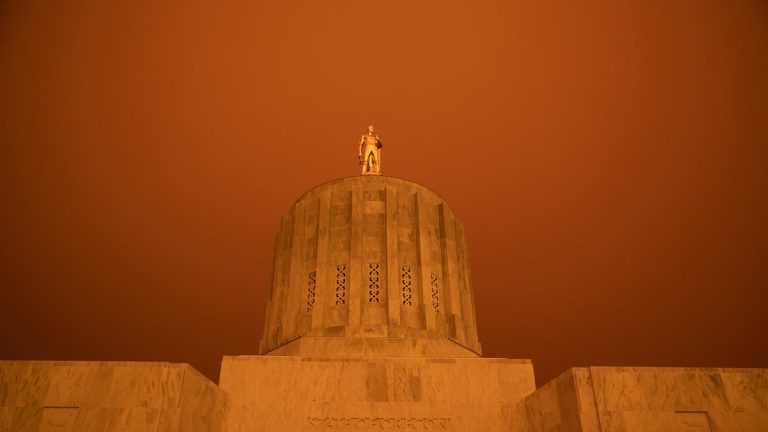Oregon Abandons Wildfire Risk Map Amid Misinformation Campaign
In 2021, following Oregon’s most destructive fire season in recorded history, the state commissioned the creation of a comprehensive wildfire risk map. This map, developed by wildfire risk scientist Chris Dunn, aimed to assess the wildfire risk of every property in the state, informing future fire-resistant building codes and home protection measures. This proactive approach mirrored similar efforts in other disaster-prone states and was intended to mitigate future losses. The map utilized local data and allowed for adjustments, offering a potentially potent tool for adapting to the increasing threat of wildfires exacerbated by climate change.
However, the rollout of the map was plagued by communication failures. Without adequate public outreach, homeowners were abruptly informed of their property’s risk designation via mail, often receiving the news concurrently with insurance policy cancellations or premium hikes. This confluence of events fueled a rapid spread of misinformation, falsely attributing insurance company actions directly to the state’s wildfire risk map. This narrative gained traction on social media and through some media outlets, despite insurers and regulators explicitly denying the connection. The lack of proactive communication from state officials created a vacuum quickly filled by conspiracy theories and distorted information.
The misinformation campaign quickly spiraled into outrage, with some accusing the state of attempting to depopulate rural areas. Claims circulated linking the map to “Agenda 21,” a conspiracy theory alleging a UN-backed plot to force people into urban centers. Conservative media personalities amplified these fears, further fueling public anger and turning the map into a symbol of government overreach. Despite attempts by scientists and some legislators to clarify the map’s purpose and debunk the misinformation, the damage was done. Public trust had eroded, and the narrative surrounding the map had become deeply entrenched.
Facing mounting pressure, state officials withdrew the initial map in 2022, acknowledging the inadequate public engagement. Despite insurers formally denying the use of the state’s map in their risk assessments, and lawmakers even passing a bill prohibiting such use, the misinformation persisted. When Zillow and other real estate websites began publishing their own wildfire risk assessments, the misinformation campaign revived, falsely linking these private sector initiatives to the defunct state map. This demonstrated the resilience of the misinformation ecosystem and its ability to adapt to new information, reinforcing existing anxieties and suspicions.
In a renewed attempt to address wildfire risks, the state re-released a revised map in 2023, incorporating feedback and simplifying the risk categories. However, the opposition remained strong, with thousands of property owners filing appeals and some counties challenging the designations en masse. Despite efforts to improve communication and address concerns, the lingering impact of the misinformation campaign continued to undermine public trust and acceptance of the map. Even legislators who had initially supported the mapping initiative began to express doubts about its efficacy.
Ultimately, in 2024, the Oregon legislature voted to repeal both the wildfire map and the associated defensible-space requirements, succumbing to the sustained pressure of the misinformation campaign. Despite the lack of evidence linking the map to insurance woes and the demonstrable need for wildfire mitigation measures in a changing climate, the narrative of government overreach and property devaluation prevailed. This outcome underscores the potent impact of misinformation in shaping public policy and the challenges of effectively combating it in a polarized information environment. The repeal represents a significant setback for wildfire preparedness in Oregon, leaving the state vulnerable to future fire events as climate change intensifies.


